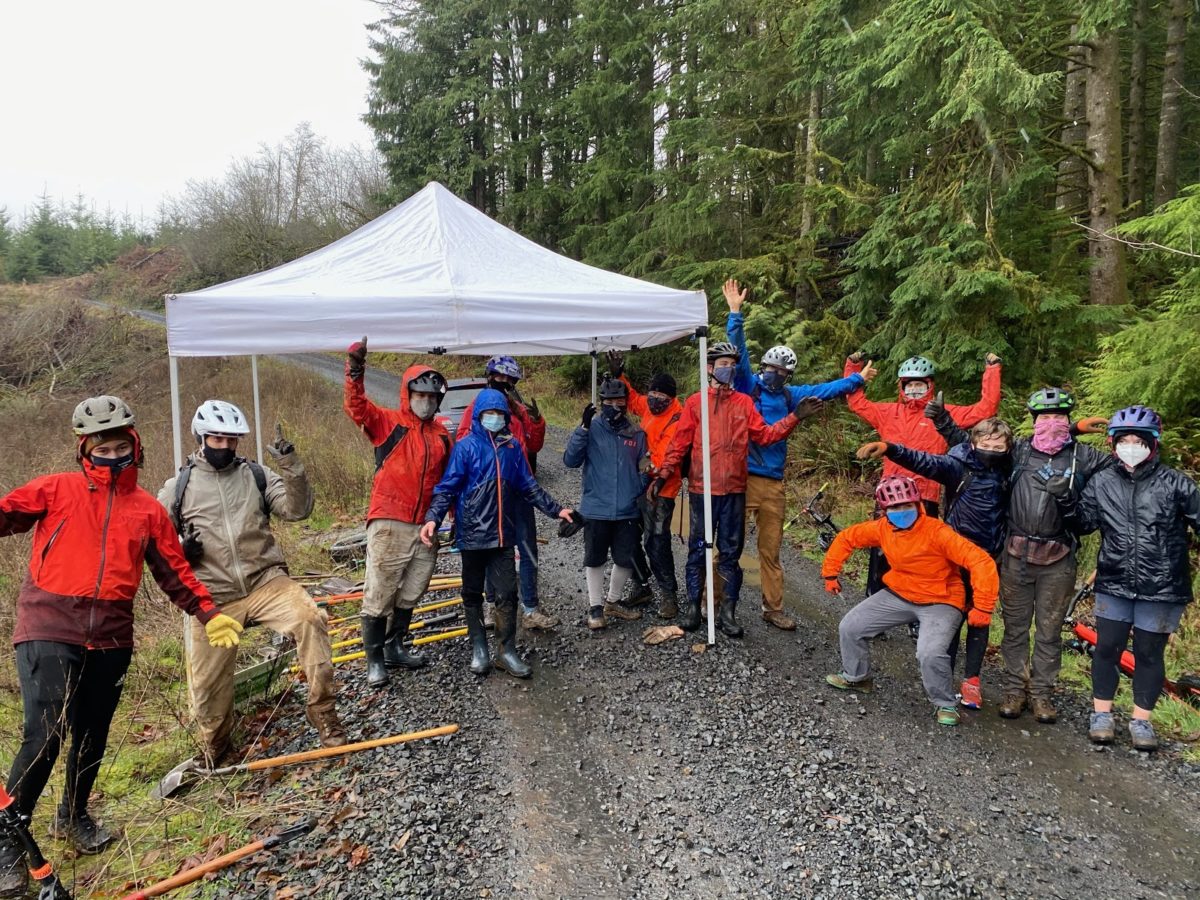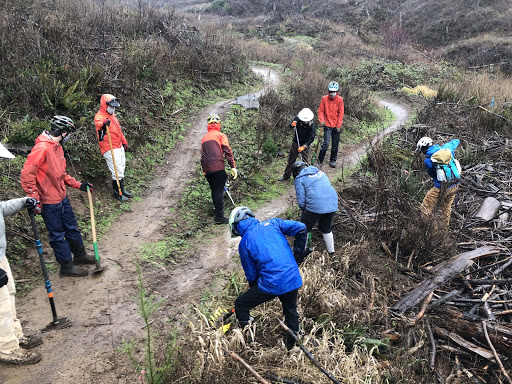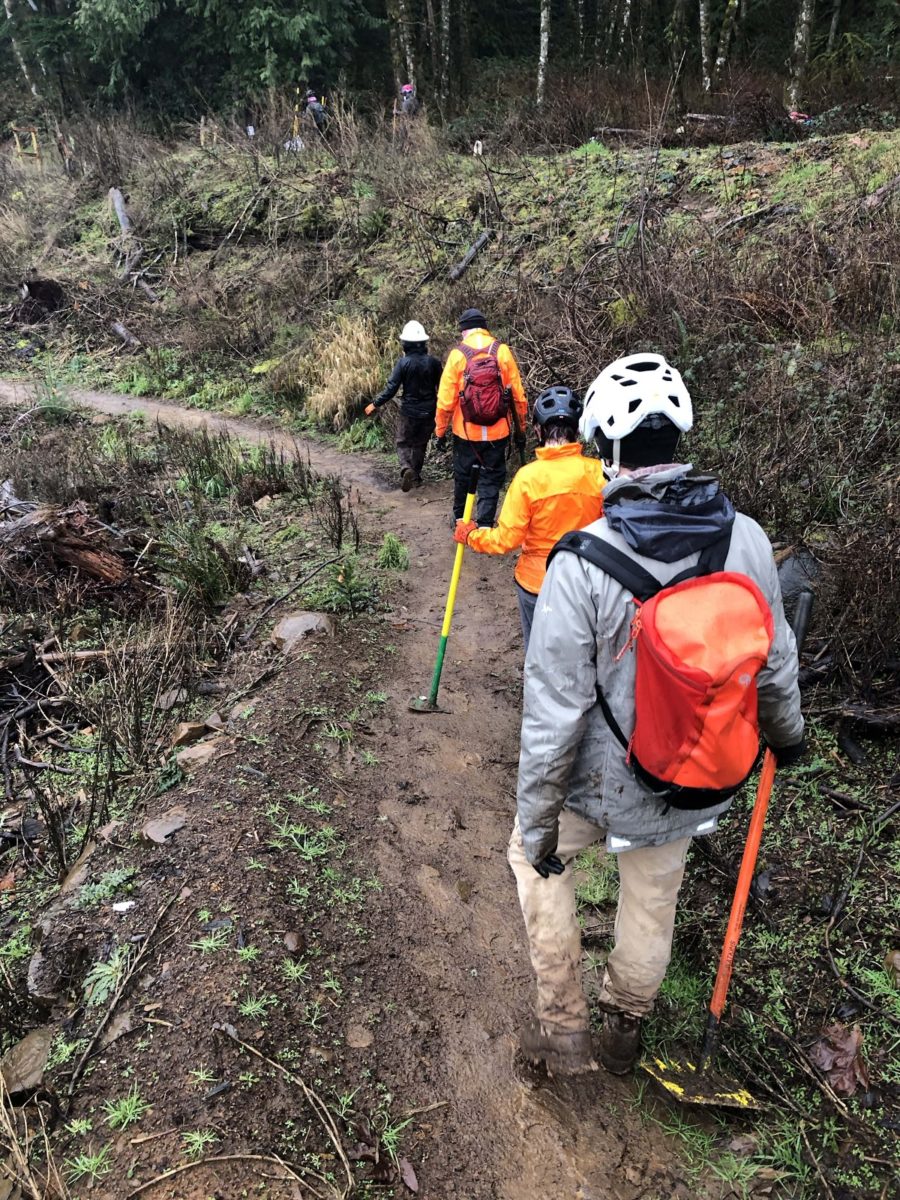Written by Volunteer Director Jered Bogli
After some back and forth with two of the assistant coaches Dan Brown and Duncan Parks, Nancy and I put a date on the calendar with the NICA Portland Composite team for a TSI Trail School and Dig Day on January 24th. NICA stands for National Interscholastic Cycling Association and was founded in 2009 to develop interscholastic mountain biking programs for student-athletes across the United States. With 16 participants attending, divided into 2 groups of 8, the crews consisted of kids ranging from 6th to 12th grade along with their parents.
We had two possible worksites, and we stuck with our original plan despite some inclement weather – we had a mix of light rain, sleet, and snow, but that did nothing to dampen the NICA crews’ energy.

We started with the basics: introductions, a safety talk covering how to hold the tools, helmets, gloves, first aid certifications, and any need-to-know medical conditions. From there, we moved into an overview of the tools and what each one is good for. We were all getting a bit cold, so we decided it was time to start moving. We divided into two groups – Nancy and I each lead a group of 8, and we quickly talked through our work plan. The goal for the day was drainage work on the Basecamp beginner loop near the parking lot. Basecamp is a beginner area that is great for true novice riders. It was built last spring, and now that it has settled in, we wanted to tune up the drainage and start to tackle any flow and line choice issues with the trail.

Each group peeled off in a different direction around the loop, and we demonstrated how to fix drainage problems on a trail. We showed the kids how a well-built drain looks. The angle needed to make the water drain, making a wide enough “Y” to move water efficiently and not clog up/fill quickly, taught them not to be afraid to pull the drain far from the trail. We then walked the trail looking for drainage problems, and as the kids identified drainage problems, we peeled them off to work independently to fix the problem. Nancy and I moved back and forth through our groups to check-in, offer advice, show different techniques, and generally guide the kids through the process. It turns out we were lucky it was raining. The rain meant you could see success in a well-built drain. You started with water on the trail and ended with no water on the trail.

Over the next 3 hours, we worked our way around the loop identifying problems and fixing them. We also found a few corners that needed some dirt work and took the kink out of a corner, so the trail flowed better, drained better, and had better sightlines. The kids and adults were having a great time, asking questions, getting comfortable with the tools, and making the trail better than when they showed up. The rain and sleet began turning to snow; we made the call to wrap it up when both crews made it to the center point, everyone was starting to get wet and cold – always better to end on a high note!
We gathered everyone up, walked back down the trail past our work taking note of how much better the trail was draining and touching up a few areas the kids noticed on the way back. We got back to the tent, fired up a heater, debriefed, and said our goodbyes. A few of the kids took a test lap around the trail to sample their work, and a few.
Others asked if they could come back again and learn more about trail building. We’re looking for a snow-free date in April to have NICA come back out and further develop their trail building skills.
Seeing youth develop new skills and confidence never ceases to inspire us. Bringing more youth into mountain biking and trail stewardship means we are creating the next generation of trail stewards and instilling the notion that to ride a mountain bike means you also need to maintain your trail systems.
We can’t wait to spend another day with the NICA Portland crew in April – when the weather is a bit warmer.